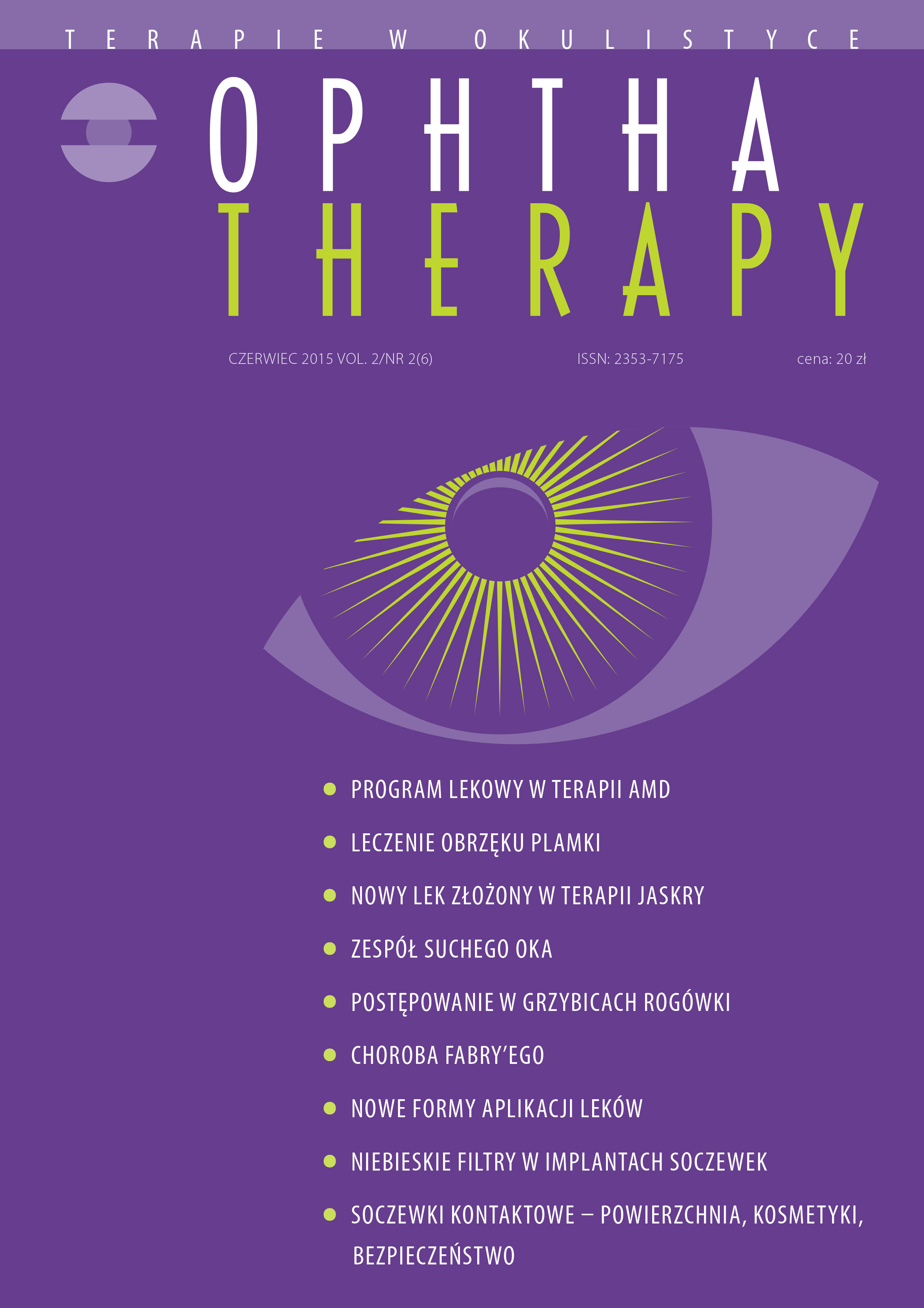Combined therapy of dry eye with hyaluronic acid
Main Article Content
Abstract
Aim of the study: presentation of benefits of a new lubricant formulation comprised of a dual polymer in the dry eye treatment.
Methods: review of literature on the impact on life and functional deficits in patients with dry eye disease. According to paper presented by Ketelson [14], there are special insights in pharmacodynamics of dual polymer lubrication drops.
Results: a demulcent solution of propylene glycol, polyethylene glycol, and the high-molecular weight polymer Hydroxypropyl guar (HPG) provides good viscoelastic properties, in optimal pH. Addition of sodium hyaluronate (HA) decreases the coefficient of friction, promotes lubrication and retention over ocular surface.
Conclusions: dual polymer HPG/HA formulation acts in potentially promoting desiccation protection, moisture retention, and improved surface lubricity on the ocular surface.
Downloads
Article Details

This work is licensed under a Creative Commons Attribution-NonCommercial-NoDerivatives 4.0 International License.
Copyright: © Medical Education sp. z o.o. License allowing third parties to copy and redistribute the material in any medium or format and to remix, transform, and build upon the material, provided the original work is properly cited and states its license.
Address reprint requests to: Medical Education, Marcin Kuźma (marcin.kuzma@mededu.pl)
References
2. McCarty CA, Bansal AK, Livingston PM et al. The epidemiology of dry eye in Melbourne, Australia. Ophthalmology. 1998; 105: 1114-9.
3. Schein OD, Munoz B, Tielsch JM et al. Prevalence of dry eye among the elderly. Am J Ophthalmol. 1997; 124: 723-8.
4. Schaumberg DA, Sullivan DA, Buring JE et al. Prevalence of dry eye syndrome among US women. Am J Ophthalmol. 2003; 136: 318-26.
5. Kozma CM, Hirsch JD, Wojcik AR. Economic and quality of life impact of dry eye symptoms. Poster presented at the Annual Meeting of the Association for Research in Vision and Ophthalmology, April 30-May 5, 2000, Ft. Lauderdale, Fla.
6. Determinants of tear film stability. The Castroviejo Lecture. Presented at: The American Academy of Ophthalmology Annual Meeting. October 15-18, 2005; Chicago, IL, USA.
7. Lemp MA. Report of the National Eye Institute/Industry workshop on Clinical Trials in Dry Eyes. CLAO J. 1995; 21: 221-32.
8. Stern ME, Beuerman RW, Fox RI et al. The pathology of dry eye: the interaction between the ocular surface and lacrimal glands. Cornea. 1998; 17: 584-9.
9. Tomlinson A, Doane MG, McFadyen A. Inputs and outputs of the lacrimal system: review of production and evaporative loss. Ocul Surf. 2009; 7: 186-98.
10. Ubels JL, Williams KK, Lopez-Bernal DD et al. Evaluation of effects of a physiologic artificial tear on the corneal epithelial barrier: electrical resistance and carboxyfluorescein permeability. Adv Exp Med Biol. 1994; 350: 441-52.
11. Behrens A, Doyle JJ, Stern L et al. Dysfunctional tear syndrome: a Delphi approach to treatment recommendations. Cornea. 2006; 25: 900-7.
12. Ketelson HA, Davis J, Meadows DL. Characterization of a novel polymeric artificial tear delivery system. Poster A139 presented at: ARVO; April 27-May 1; Fort Lauderdale, FL, USA 2008.
13. Aragona P, Papa V, Micali A et al. Long term treatment with sodium hyaluronate-containing artificial tears reduces ocular surface damage in patients with dry eye. Br J Ophthalmol. 2002; 86(2): 181-4.
14. Rangarajan R, Kraybill B, Ketelson HA. Effects of a dual polymer artificial tear solution on prolonged protection and recovery in an in-vitro Human corneal epithelial cell model. Investigative Ophthalmology & Visual Science. 2014; 55: 3695.

